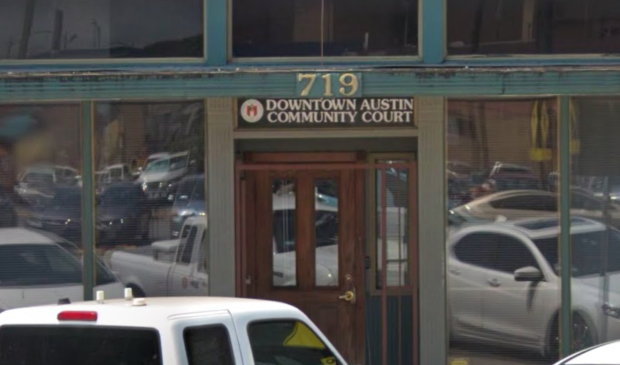About the Author
Chad Swiatecki is a 20-year journalist who relocated to Austin from his home state of Michigan in 2008. He most enjoys covering the intersection of arts, business and local/state politics. He has written for Rolling Stone, Spin, New York Daily News, Texas Monthly, Austin American-Statesman and many other regional and national outlets.
Newsletter Signup
The Austin Monitor thanks its sponsors. Become one.
Most Popular Stories
- Latest State of Downtown report shows the city core’s businesses and housing are in transition
- Cap Metro to shelve 46 new electric buses for a year after manufacturer bankruptcy
- Jesús Garza disputes allegation that he violated city ethics rule
- Mobility Committee hears public concern regarding expansion of MoPac
- Council gives first reading OK to major development on tiny slice of land
-
Discover News By District

Community court touts data showing sharp drop in recidivism among clients
Thursday, December 19, 2019 by Chad Swiatecki
The city’s Downtown Community Court on East Sixth Street has released data showing a drastic reduction in recidivism among its clients, thanks to the social services and case management the court offers. The analysis of data from the 2018 fiscal year showed that the court’s 59 clients had accrued more than 1,500 offenses of all types prior to receiving help, with only seven offenses total for those clients after they began working with the court.
Court managers say the 99 percent reduction in criminal offenses shows that the largely homeless and at-risk population it serves can be moved into stable housing and away from criminal activity that adds to the city’s public safety and emergency services budgets.
Currently the court receives $2 million a year from the city for its case management services, which has a wait list of just under 100 people hoping to start receiving assistance and eventually move into permanent supportive housing. The community court was created in 1999 as one of the first in the nation to use a court facility as a sort of on-ramp to social services.
“We wanted to be able to show harm reduction or data to show the effectiveness of our wraparound approach with the individuals we’re trying to serve,” said Peter Valdez, director of the court.
“Since we’re a court of law we thought it would be good to look at the individuals that we work with to determine what the impact was from the criminal justice perspective,” he continued. “It’d be interesting to see how other parts of the system have been impacted, with less interface and time spent in jail and emergency rooms, and chances are eventually the community will recognize a cost savings.”
Because of the need to house the city’s homeless population, the court has also started to pay for housing for 20 of its clients. Valdez said he and other advocates for the homeless, including the Ending Community Homelessness Coalition and Community First! Village are looking for ways to increase that number in the future.
“There aren’t a lot of opportunities as a whole for homeless individuals regarding affordable housing and even subsidized housing,” he said. “We felt that a lot of the individuals we are working with, we get them to a place of stability from the standpoint of emotional and mental health, and then we still haven’t reached the point where we can connect them with housing because those opportunities are few and far between within the existing housing system.”
Other options to increase the effectiveness of the court’s approach include offering daytime programming such as resume assistance, life skills, and arts and crafts activities for visitors who come in off the street looking to avoid drugs and other criminal elements. That isn’t an option currently because the court’s small downtown storefront location doesn’t allow it to house all of its 30 employees on-site, though the city’s real estate office is conducting an ongoing search for a larger space downtown.
Robert Kingham, the court’s operations manager, said a study dating back to 2014 with all client data is currently underway, as is work on the 2019 fiscal year in which the city took steps to decriminalize homelessness. Kingham said that change brought more homeless people into the court and added to its wait list for management services, but didn’t cause a spike in criminal behavior.
Asked if the empirical data was compiled in anticipation of funding scarcity in future years as the city faces a state-imposed limit on property tax revenue, Kingham said the study began before it became apparent what actions state lawmakers were planning to take during this year’s legislative session.
“We want to make sure we’re being good stewards of the money we’re being given by City Council, and make sure that the case management model we use is effective,” he said. “Looking at that recidivism rate is one way to do that because of the decrease in usage of the criminal justice system for all cases.”
Photo courtesy of Google Maps.
The Austin Monitor’s work is made possible by donations from the community. Though our reporting covers donors from time to time, we are careful to keep business and editorial efforts separate while maintaining transparency. A complete list of donors is available here, and our code of ethics is explained here.
You're a community leader
And we’re honored you look to us for serious, in-depth news. You know a strong community needs local and dedicated watchdog reporting. We’re here for you and that won’t change. Now will you take the powerful next step and support our nonprofit news organization?








